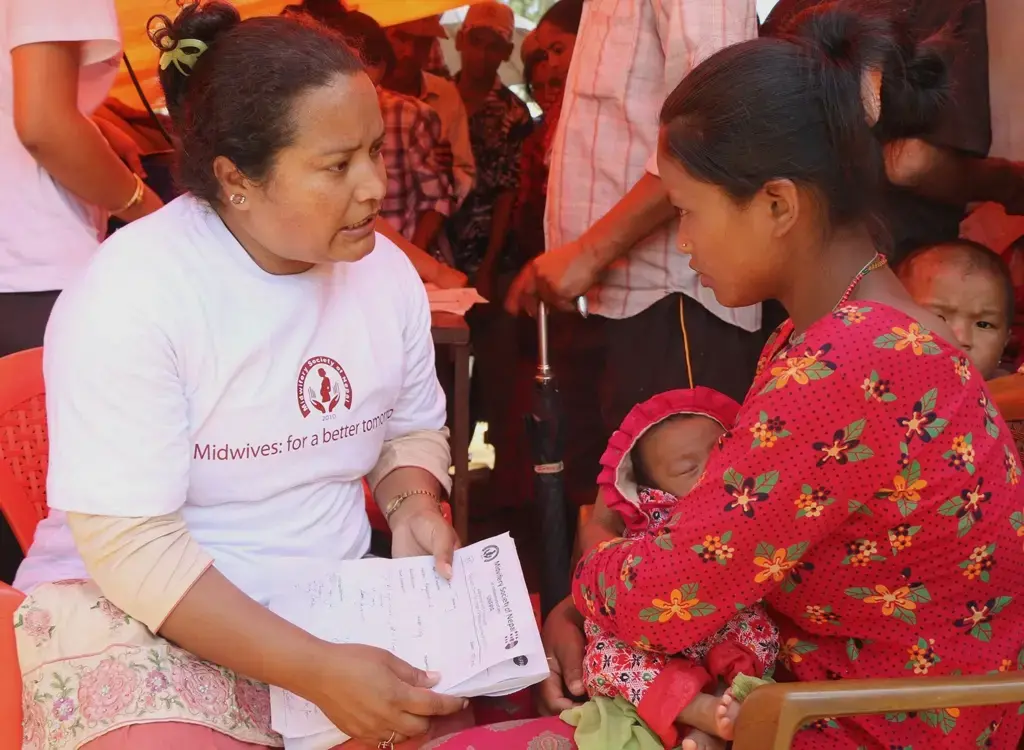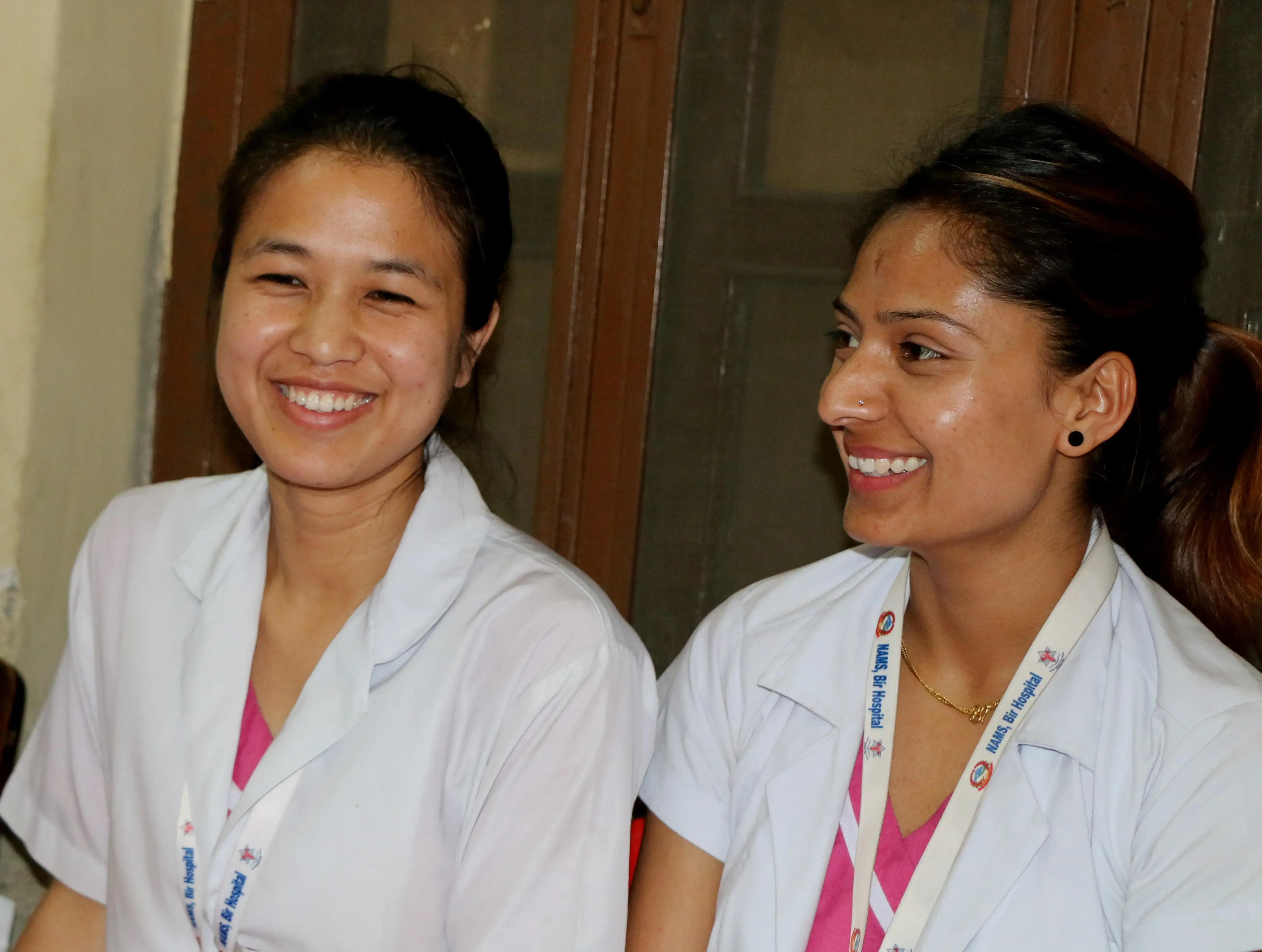
This year's International Day of the Midwife in Nepal comes at an especially poignant time, a little more than a week after the devastating April 25 earthquake. UNFPA estimates more than 126,000 pregnant women - many of them displaced - are in need of potentially life-saving health services, including safe childbirth and post-partum care. Kiran Bajracharya, President of the Midwifery Society of Nepal, spoke with UNFPA Nepal.
This year's International Day of the Midwife in Nepal comes at a very difficult time, after the devastating earthquake. What role are midwives playing at this time in the earthquake response?
Midwives have a huge responsibility, more than ever, amid a humanitarian disaster like the one we currently have. We've set up help desks at maternity hospitals to assist pregnant women, their family members and those who've given birth and been discharged from the hospital. We're also conducting community outreach clinics with a special focus on pregnant women, post-natal mothers and newborns at temporary shelters at Tudikhel Military Ground and Bhaktapur, where massive destruction has occurred. Our midwives are liaising with medical and paramedical professionals as well to collect family kits with essential supplies to distribute to earthquake victims who've lost everything. We're seeing heartrending suffering, and doing all we can to help women deliver their babies safely, and tend to their newborns in the best way possible, despite the terrible circumstances.
Even before the earthquake the role of midwives in Nepal was seen as very important. Can you describe the progress made in Nepal in enhancing and strengthening the role of midwives here?
It's true that our profession has been gaining in strength and status in recent years. Our association provides continuing midwifery education to our members, holding workshops and various trainings, as well as the first-ever Nepal National Midwifery Conference. We actively engage in policy dialogue and lobbying with government, relevant international agencies and civil society organizations, and we've succeeded in joining the Ministry of Health and Population's task force for professional midwifery development. We're also part of the working group that's helping formulate standard midwifery guidelines with the Nepal Nursing Council, a regulatory body. Globally, we're partnering with the Royal College of Midwives in the UK whose volunteers visit Nepal to build the capacity of nurse midwives, and with the University of British Columbia in Canada for teaching courses for rural nurse midwives. There are many more things to add, but this shows you how far we've come in raising the profile of our vital profession.
What are the challenges that remain in Nepal in getting midwives to be integrated better in the larger public health fabric?
We need to truly recognized as separate from nursing, for once and for all. We need professional midwifery education as a separate cadre, we need strong faculty to train our midwives, we need to be accredited, credentialed, registered and licensed. This will strengthen our profession immeasurably. We also need the government and other supporters to provide our association with our own physical space - we really need that. And, of course, once trained, midwives need work opportunities that allow them to make a decent living, including recruitment policies in the government health system. We also want to give back to our communities and country - we strongly believe in a deployment plan with compulsory retention in rural areas, and rotation schedules for midwives so that our experience is broadened, and society across the spectrum benefits from our services.
From your own life, can you describe a time when the importance of your profession was made all the more real to you -- an unforgettable experience or moment?
I wanted to serve as a midwife ever since I was very young, and earned my Master's degree in Maternal Nursing from southern India. I was so inspired by midwifery colleagues from other countries - many of them had come so far in getting midwifery to be taken seriously by their governments and the medical profession. From my own experience, I will never forget the woman who, along with her baby, could have come to serious harm due to a retained placenta. But the well-experience nurse midwife who managed that crisis, using simple techniques and a sound body of knowledge, came to the rescue - demonstrating so memorably that midwives save lives. It's really that simple.Related resources: Gaining momentum in launching midwifery education




